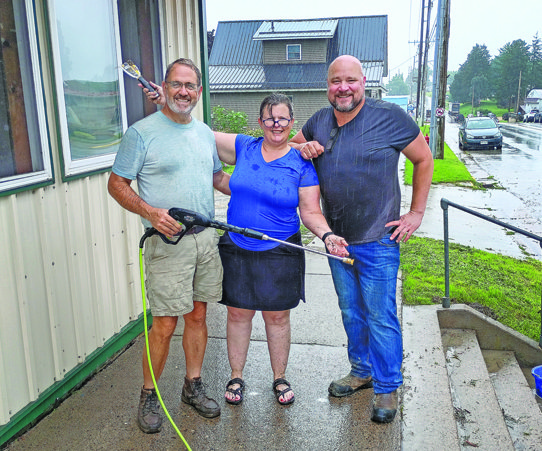ORION - About 15 minutes east of Boscobel you’ll find the small town or Orion—the first village in Richland County, and site of the original county courthouse.
Today, you’d be forgiven for missing it: a few modest houses along the Wisconsin River, and a boat landing which once served a ferryboat service to Muscoda, across the river.
But the folks who live there have a strong sense of neighborhood pride, centered on an institution that had its start nine years ago: The Red Cedar Café.
You won’t find the café listed in any business directories; it’s a strictly word of mouth and, as they say, “hyperlocal” affair. During the summer months, very Saturday morning, since 2014, residents of south Orion gather at the home of Bob and Jan Hirschy for coffee, baked goods, and neighborly conversation.
One of these conversations recently turned toward local government and civics.
“We don’t require our students to take classes on civics, which I think is regrettable,” explained March Schweitzer, a Red Cedar regular. “We decided it was important for people to be more educated in civics, and so my husband decided to see if we could get together a group of friends who would write articles about government and the Constitution and that sort of thing,” she said.
That group evolved into about a dozen residents of Orion and Almar Acres who are contributing a new occasional feature in the Dial. We’re calling it “We the People,” and it’s a series of short articles designed to break down the details of how, exactly, our systems of government work.
“The articles are not partisan at all, and they represent different walks of life,” said Canada Killam, another member of the group. “The only common cause is that, you know—this is a great country to be, and we risk losing that if we don’t remember that and put some effort back into it.”
We’re sharing the first “We the People” article from Orion in this week’s edition, and we welcome your thoughts and comments.
We The People
Wisconsin is one of only eight states that do not require the teaching of civics in high school. This is the first in a series of articles presenting some of the topics that would be covered in a high school civics or government class. This one explains the three branches of government.
In the U.S., the Constitution establishes three branches of government: legislative, executive and judiciary. The legislative branch includes the Senate and the House of Representatives and makes laws. The executive branch, which includes the President and all the cabinet and other agencies, enforces the laws. The judiciary branch, the Supreme Court and lower courts, interprets the laws.
Almost every state mirrors the federal model, and in Wisconsin the legislative branch consists of the Senate and the Assembly, the executive branch consists of the Governor and the administrative agencies, and the Judiciary consists of the Supreme Court and lower courts. Counties and municipalities generally do not follow the three-branch system. The powers of these three branches will be described in a later column.
The purpose for having three branches is to make sure no single branch has too much power, through what are called checks and balances. For example, the President can veto measures passed by Congress; the Congress can impeach the President; and the Supreme Court can pronounce a law or an executive action to be unconstitutional.
The U.S. in its 1787 Constitution was the first nation to create three branches, an idea that had been proposed 40 years earlier by the French philosopher Montesquieu.
On this topic, as on every topic that will appear in this series, there is much more that can be learned, and we encourage readers to use this article as a starting point for more research.




